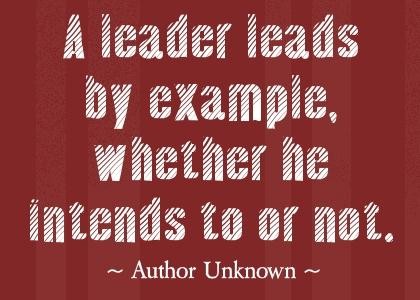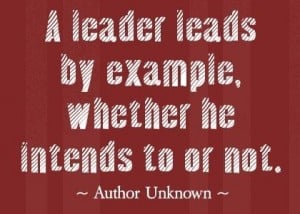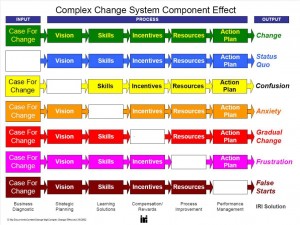
(Thanks George, for this month’s post & prompt!)
There has been a lot of talk on the idea that education as a whole takes a long time to change. As an educator, this is a challenging notion, since we are seeing many people doing some amazing things that did not exist when I was a student. Change is happening but sometimes it is hard to see when you are in the middle of the process.
Some things are out of the hands of schools. Budgets and government decisions can make creating new and better learning environments for students tough, but not impossible. Educators are not powerless, and in some cases, more powerful that ever. The story of education can not only be told from the perspective of educators, but also from the students that are currently in the system. Although there is still a lot of work to do (as there always will be in organizations that focus on continuous learning and have an emphasis on becoming “innovative”), there are also opportunities in education, now more than ever, that we will need to take advantage of and create a different path.
Here are some of the challenges we have had in the past and how we can tackle them
1. Isolation is the enemy of innovation.
Education has traditionally been an isolating profession where we get some time together, but not nearly enough. Even if we wanted to change this significantly, in most cases, the current physical structures do not allow us to work with other educators. Some administrators have been very innovative in their planning of teacher prep time and have embedded collaboration time into the regular school day, but it is not necessarily enough to make a significant impact.
How so many educators have shifted this “norm” is by using social media spaces to connect and learn from educators all over the world, and making a significant difference in their own classrooms, and creating much more engaging and empowering learning spaces. Isolation is now a choice educators make. Where the shift really has to happen is using things like Twitter is for educators to connect and share learning that is happening with educators in their own school. I challenged people to do the following (as shared in this visual from Meredith Johnson);

We need to make this happen and create transparency in our own classrooms.
How does a song like “Gangnam Style” go so viral that most people around the world not only know the words but the dance moves? Social media. If a song can spread so quickly, so can great learning.
Make it go viral.
2. A continuous focus on what is wrong, as opposed to what is right.
Think about the traditional practice of what school has done with many of our students. If they struggle with the subject of math, we often send the more math homework to do at home. Does this really make sense? If they are struggling at school, making them struggle at home with the same content is often counter-intuitive. It is not that we shouldn’t struggle, but it is important that we are very thoughtful of how we spend our energy.
The shift that has happened with not only our students, but also our schools, is focusing upon building upon strengths as opposed to focusing solely on weaknesses. This is imperative as building upon strengths often helps us to not only build competence, but also confidence which leads us to the mindset that we are more open to tackle our other challenges along the way.
I love this quote from Forbes on putting people in the right positions to be successful:
Leadership is a privilege, not a right, and we need to treat it as such. Leadership means encouraging people to live up to their fullest potential and find the path they love. That, and only that, will create a strong culture and sustainable levels of innovation.
Many organizations outside of education are hiring not on need, but finding the best people and empowering them based upon their strengths. Schools should try to do their best to follow suit and put people to be in the best situations to not only do well, but to lead.
3. Experience is a very powerful teacher.
I remember sitting and listening to Bruce Dixon at a conference and something he said has always stuck out to me:
In no other profession in the world do you sit and watch someone else do your job for 16 years before you go and do it yourself.
Wow. That is a powerful message and shows why so many new teachers aren’t coming into school with all of these “innovative ideas” and changing our school system like so many people predicted. Many educators simply replicate their experience as a student. If you think about it, at least one-third of many teachers educational experience is as a student, not a teacher. That is a tough thing to overcome, but not impossible.
Innovation has no age barrier, and if we can tweak the experience for educators in their professional learning, they are more likely to change the experience for their students. Writing ideas about “21st century classrooms” on gigantic pieces of paper with a felt marker is not going to create cultural shifts; changing experiences will.
People are starting to look differently at professional learning, and create experiences that are much different from what I first experienced as a teacher. I think a major reason for this shift (going back to point 1) is that educators are seeing the shift in practices in so many other organizations, and are trying to create a different practice where more educators are not really focused on teaching as much as they are about learning. This empathy is crucial since to become a master teacher, you must become a master learner.
Changing experiences to shift the focus on the learner from the teacher helps to disrupt routine. If you would want to create an environment where students would want to be a part of your classroom, we have to experience what learning could look like for ourselves and start from a point of empathy.
One shift that was not mentioned was the mindset of looking at obstacles as opportunities. As mentioned earlier, not everything is in our control, but as educators know, they can make an impact every single day. It is not always easy, and teaching can be a very daunting and tiring job, but I believe that every day we can make a difference if we choose. Having that mindset is the only way that we will ever truly be able to make a powerful change for ourselves and our students.
For this month’s prompt, write about how you already are, or are going to, address the challenges discussed above.
Amber

Hi stranger friends!
I was Voxing with George this morning, 🙂 and we were lamenting how life just exploded for us both this spring. He was busy getting engaged and we all know how time consuming wedding planning can be, 🙂 Add that to an influx of speaking engagements, he’s been in high demand! Not just speaking locally either…the man has been ALL over. Meanwhile, I’ve been busy getting a new job in a neighboring district and had an award thrown in, just for good measure.
Excuses? Possibly. The reality of our admin worlds? Definitely.
There isn’t a calm “season” in education, especially when you are trying to live to the fullest outside of your building. Recognizing the ebbs and flows of what we do is important to recognize as you contemplate leadership. We talk about modeling what we want to see from our staff, and this balance counts too! Administrators have to set boundaries and limits. The purpose of leading is to show through your walk and talk, that you are genuine. Being busy, and letting things slide at times, (gulp.) is a reality. It’s if and how you handle that slide that speaks loudest to your staff.

That being said, it’s the end of the school year. It’s time for EOY procedures, it’s time for making plans for the next year, it’s time for goodbyes. Thank you for joining us on this SAVMP adventure. I’m going to let George close us out proper, but I wanted to remind you to value the connections you have made through this program. Reach out to me, or George, or your mentee’s/mentor’s, if you ever have a need.
Good luck and happy summer!
Amber

Recently I took part in a leadership activity that aptly illustrated the importance of “clear” communication. The group was partnered up. One partner had a picture of a figure, the other a blank piece of paper. While sitting back to back, the person with the figure attempted to explain what the picture looked like while the other partner drew. It is an understatement to say that at the end of the activity, the pictures didn’t typically match.
As a leader it is up to you to clearly define not only your vision, but your expectations. If they are not so clearly stated that anyone can read, follow or understand, the onus falls on you, as the leader to clarify. If your expectation is that parents feel welcome when they walk in the doors, what are the look for’s that indicate that is happening? Have you shared those with your staff? What if your passion is that every student feels heard? What does that actually LOOK like in a classroom? Are your teachers aware? the counselor? Many leaders in the corporate world now understand that clear, two-way communication is vital to the success of any organization and its leaders. Jim Collins, in his best selling book about making organizations better, Good to Great, writes, “A primary task in taking a company [read: school or school system] from good to great is to create a culture wherein people have a tremendous opportunity to be heard and, ultimately, for the truth to be heard.” (2001, p. 88)
Students learn better when adults communicate well. The need for good communication in our schools is great because the needs of our students are great. Students matter.
The spring is the downhill slide in education. We’re moving towards the end of the 2013-2014 year, and plans for 2014-2015 are on the horizon. Take advantage of what’s left of this semester to evaluate just how clear is your “communication”. Is there something that you can share with your group that didn’t go as expected, because of a communication miscue? or a success?
Have a GREAT week!
Amber

We’ve been discussing the “change matrix” within a leadership group in my district.

What’s in it for me? When it comes to change, this may be one of the most frequently used phrases, both vocalized and internalized. Too many times we miss out on great opportunities because we have the wrong mindset. At what point in a teacher’s career does the focus shift from doing what is best for students to, “let’s do what’s best for me.” Our systems are built around the convenience of the adults and not necessarily for the benefit of the students.
I know that some of you may disagree, but where’s your evidence?
1). Master schedule is based on adult’s preference.
2). Teachers threaten to quit or transfer if they do not get the classroom or conference that they want.
3.) Knowing that some teachers lessons aren’t up to par, but not wanting to rock the status quo.
4.) Looking the other way at worksheet driven classrooms because “the test scores are fine.”
Educators need to be redirected back to the purpose of our profession – doing what’s best for students’ success. Our current practices may give us gradual change, but not the change you need to truly make a difference.
We must provide incentives, which doesn’t always mean money. Knowing how important the students are to both their own success and to ours, what can we do, incentive-wise, to get teachers to focus on what’s best for students? How do you steer the conversations back to what’s best for students? Are you a students’ principal?
(Thanks to Dr. Gerald Hudson for the starting point here, :))
Amber
In our world of constant updates and information, I believe we have to be thoughtful on how we communicate with parents when a “traditional” way serves best. For example, many schools use things like Twitter, Facebook, Instagram, Remind101, etc., to connect with parents (I can’t believe that I forgot email) and share the story of their school. This is great, but there are a few considerations that I stress to educators.
For example, when an incident has happened with a student, a phone call or in person conversation, is your main go to. Never deliver bad news about someone’s child through email. That is a standard. The other thing that I always consider is that I always call home to a parent when their child has been in my office and talk to them while the child is in the room with me (most of the time but there are times when it needs to be a private discussion with the parent). My assumption is that if a child went home at the end of the day and told their parents they were in the office, minds would begin to race and it could cause an issue when there is none. It also ensures one story. I know that as a kid, if I was in trouble and my teacher never called home, my story was WAY different than the one the teacher would have told.
Telling your story is essential and we have so many mediums to do this now, but it is important to also remember when NOT to use them.
For this week, I want you to talk about some of your communication essentials and ways that you believe are imperative that we communicate with all of these technologies available.






